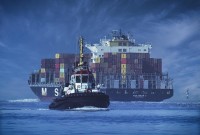- Home
- Business Processes
- Industry Knowledge
- Aerospace Industry
- Automotive Industry
- Banking Domain
- BFSI Industry
- Consumer/ FMCG Industry
- Chemicals Industry
- Engineering & Construction
- Energy Industry
- Education Domain
- Finance Domain
- Hospitality Domain
- Healthcare Industry
- Insurance Domain
- Retail Industry
- Travel and Tourism Domain
- Telecom Industry
- Leadership Skills
- eLearning
- Home
- Business Processes
- Warehouse Management
- Types of Order Picking Methods in the Warehouse
Types of Order Picking Methods in the Warehouse
There are many different types of picking in a warehouse and each one works as a customized solution for each business. Depending on the size of your warehouse and inventory, the manpower you have on hand, and the number of customer orders made each day, there may be certain methods that are more efficient for you than others.
There are many different types of picking in a warehouse and each one works as a customized solution for each business. Depending on the size of your warehouse and inventory, the manpower you have on hand, and the number of customer orders made each day, there may be certain methods that are more efficient for you than others.
Given below are the commonly used types of order picking in the warehouse:
Single Order Picking
The most common type of picking is single order picking. Workers pick orders one at a time as they receive them and continue picking items until the entire order is complete. The picker is provided one order at a time and then goes to the warehouse to find each item on the list before completing the order. However, in many cases, the sequence in which orders are given to pickers and the routes they follow are not optimized. The worker must always make a full trip through the warehouse just to fill a single order. This is not the most efficient method. This kind of inventory management is best suited to only the smallest of warehouses as it is very inefficient.
Batch Picking
In this case, workers can pick multiple orders at a time, with both manual and automated picking. The manual picking environment works by allowing the picker to pick SKUs required for multiple orders at a time. This minimizes the travel time. Batch picking is also used to pick loose SKUs from the forward pick area. Products are considered to be picked and then sorted. With automated picking, the worker remains in one location while horizontal and vertical carousels deliver the required SKUs to the worker.
Pick and Pack Parcel Shipments
In this case orders are picked in a batch mode to allow for a pick and sort type of picking. The use of this model enables immediate release. Containerization (volume and quantity) is performed simultaneously and the items are picked directly into the shipping container. The container is packed automatically as it is being picked.
Multi-Batch Order Picking
This is the ideal pick and pack solution for cases when multiple smaller orders need to be distributed. These orders are more effective for workers that travel long distances within a warehouse. Multi-batch picking is used for orders coming from different areas in the warehouse, and thus reduces the order pick times by collecting numerous orders simultaneously. This process also reduces the time needed to process multiple SKUs.
Manifest Picking
A manifest in material-handling context is a list of cargo either delivered to or shipped from a warehouse. Manifest picking is a flexible picking methodology which enables users to pick across Pick Slips or across Sales Orders. The operator builds a pick manifest at the start of picking operation by scanning multiple pick slip numbers or sales orders. The operator picks the material for the orders using a set of interleaved pick tasks. This way more than one order can be simultaneously picked in a single pass of the pick zone. Once all tasks from all orders are picked, operator either drops the picked LPNs or performs a "Pass" to the next zone.
Zone Picking
This method divides the warehouse into several zones and assigns workers to only work within a specific zone. Each zone can use its own type of technology and storage system, depending on what would work best for the SKUs stored in that zone, and the storage technology used in that zone. Orders can be picked in the past from zone to zone, or delivered to a specific point before shipping. LTL (Less than truckload)/TL (Truckload) shipments can be picked either from the Bulk or Forward Pick areas based on the inventory availability.
Wave Picking
Workers are assigned to zones, pick only from those zones, and do so in batches thus fulfilling multiple orders simultaneously.
Pick and Pass
This strategy involves passing orders from one zone to another for fulfillment. If an order originates in zone A, a worker adds all the SKUs required from that zone before it passes onto zone B. This is repeated until all the items can be taken to shipping. To maximize productivity with this method, order management software (OMS) can be used to manage the order flow.
Full Case Pick and Pack Process
In this process, the user picks full cases from the bulk storage. Though packing is not required for full case picking, the inventory is brought into the weigh station to print the labels and add dunnage materials, if needed. This is where the inventory container is converted into an outbound container.
Order Consolidation This method is an alternative to pick and pack. Each zone selects the SKUs required for the order simultaneously. When one zone’s partial order is complete, it is sent to consolidation until the SKUs from the other zones arrive. When all the SKUs are together, the partial orders are matched up into one large order. This order is then sent to shipping. This is a very advanced strategy that required inventory management software (IMS).
Advanced Systems Picking
In this system, totes for individual orders travel from zone to zone where they are delivered into picking stations were a worker is picking from carousels. These batch stations use specific systems to direct the correct quantity to each tote. During this process, the bulk components of orders can be picked by workers on forklifts who are doing one order at a time or batch picking. All these components are brought together in consolidation.
Picking based on inventory aging
One can use FIFO and LIFO strategies to ship items, based on the date when the inventory entered the warehouse. When inventory is first received or created in the warehouse, the warehouse system captures the aging date. This date is then used to identify the oldest or newest inventory in the warehouse.
Put Wall Order Consolidation
To understand put wall concept, think of put walls as cabinet-like structures that are divided into a series of compartments, also known as cubbies or chutes. On one side operators put product into assigned cubbies for their respective orders and on the other side, another operators pack out these orders. This is useful for scenarios where one need to consolidate a product to a prepack staging area, based on configurable criteria. Companies that ship to stores or handle small items will benefit from decreased picking time. This warehousing functionality is also referred to by other names, such as put-to-light and break opens. In practice, a worker on one side of the put wall places items for different orders in individual slots or totes (that’s the “put” in put wall). After all items for a given order are in the designated location, a worker on the backside of the wall removes the items for packing and shipping.
Related Links
You May Also Like
-
The Outbound process starts with routing the shipments. The Outbound execution process starts from the point when pick tasks are completed for an outbound shipment and ends at the point where the outbound packages are loaded into trailers. The Warehouse Outbound process includes managing and controlling outgoing materials starting from the download of orders through to the shipping of products from the warehouse.
-
In the normal course of business, customers are likely to return orders from time to time due to various reasons and business should design processes the manage and accept such returns. A well designed returns management process can reduce costs and issues associated with returns or exchanges.
-
To stay competitive in today’s tough market, the location of your warehouse is vital. To grow retail business need to offer to customers faster and affordable shipping time, which is dependent on the warehousing location as the location of the warehouse affects the transit time to ship orders to customers.
-
What is a Warehouse & why companies need them?
All organizations hold stocks. In virtually every supply chain, gaps exist between when something is produced and when a customer is ready to buy or receive it. Stocks occur at any point in the supply chain where the flow of materials is interrupted. This implies that products need to be stored during this period of gap.
-
Warehouses can be places where piles of packed or loose products occupy space. If left disorganized, it will become very challenging to identify products for packing or picking. Hence, proper organization of warehouse is very important. Warehouse labeling systems eliminate this problem by making sure products are easily identified and managed during the warehousing and shipping process. Labeling is the most functional and cost-effective way to keep your warehouse organized and operating efficiently.
-
One of the most important decisions when running a warehouse is its layout. Warehouse layout defines the physical arrangement of storage racks, loading and unloading areas, equipment and other facility areas in the warehouse. A good layout aligned with the business needs could have a significant effect on the efficiency.
-
Transport operations are often divided into full load and part load and due to economies of scale, the unit costs are higher for part loads. Our customer needs several part loads delivering, so it can reduce costs by consolidating these into full loads. Then it gets all the part loads delivered to a warehouse near the suppliers, consolidates them into full loads, and pays the lower costs of full-load transport to its operations.
-
Warehouse management and distribution logistics involve the physical warehouse where products are stored, as well as the receipt and movement of goods takes place. Warehouse management aims to control the storage and movement of products and materials within a warehouse. These operations include the receipting of inwards goods, tracking, stacking and stock movement through the warehouse.
-
When products arrive at a facility, there need to be a defined process to let them in. The process for accepting inventory when it arrives is called "Receiving". Any warehousing operation must be able to receive inventory or freight from trucks at loading docks and then stow them away in a storage location. Receiving often involves scheduling appointments for deliveries to occur, along with unloading the goods and performing a quality inspection.
-
What is the difference between Warehouse Management & Inventory Management?
The terms “inventory management” and “warehouse management” are sometimes mistakenly used interchangeably as they both deal with operations and products of industries. Despite their few similarities, there are many notable differences between warehouse and inventory management systems.
Explore Our Free Training Articles or
Sign Up to Start With Our eLearning Courses

About Us
Learning
© 2023 TechnoFunc, All Rights Reserved











